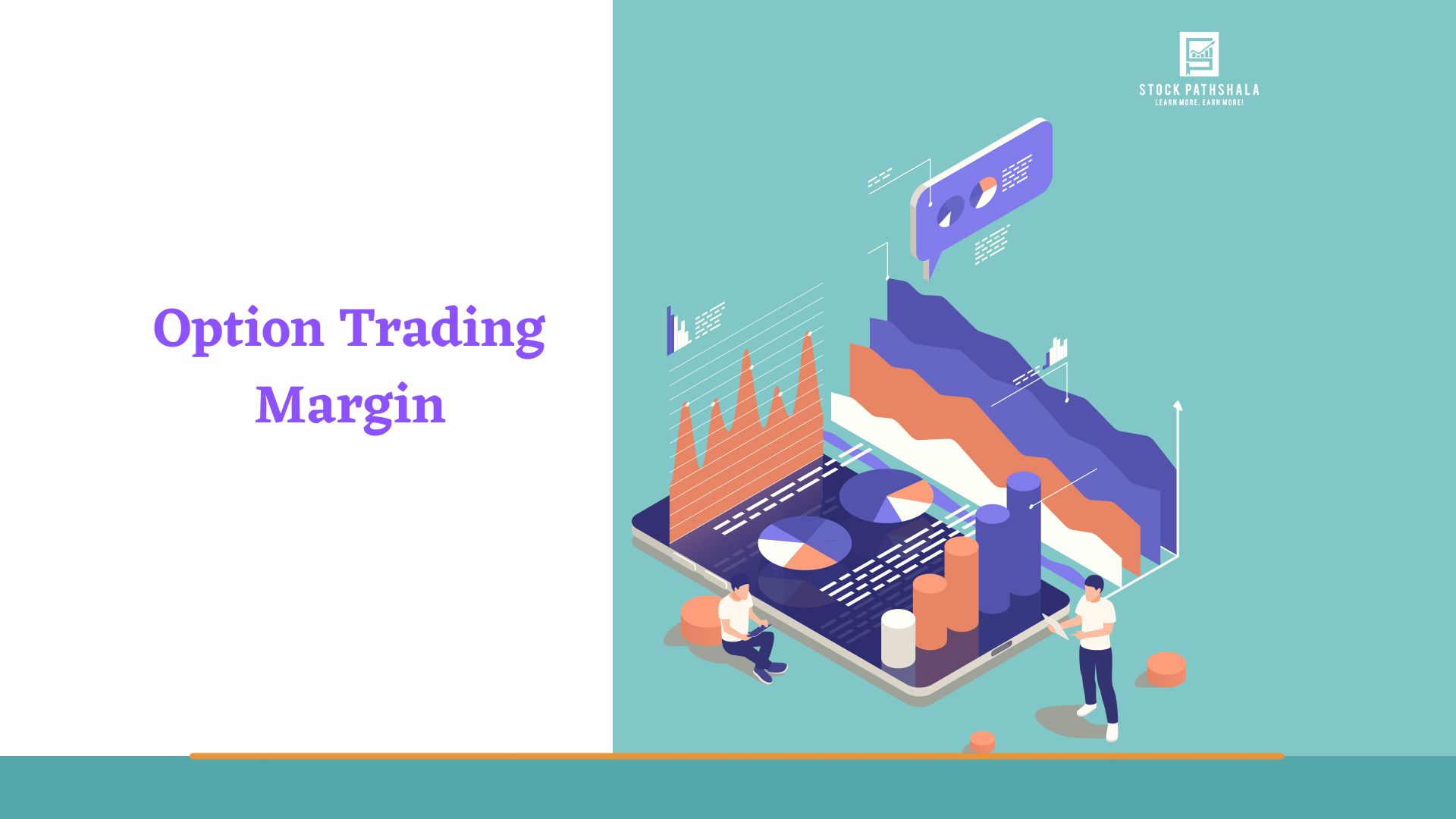Options trading, is the type of derivative where the buyers pay a premium to the seller and get the right but not the obligation to settle the trade on the expiration of the contract. Now, here it is clear, that the option buyer opens a position by paying a premium but what about the seller? What requirements need to be fulfilled by the option writer (seller) to open a new position in the market? Here, comes the concept of option trading margin.
What is the option trading margin and how to calculate the margin amount? Does this impact the sellers’ profit in options trading?
In this article, we will be providing you the complete detail on margin options along with the related rules and requirements.
What is Margin in Options Trading?
To understand the meaning of option trading margin, let’s consider a situation where you visit the bank to avail loan facility. Now before providing you with the loan, the bank used to analyze your current financial condition for which it verifies the details like your current income, credit score, and any existing loan, etc.
This is done to ensure your financial capabilities of paying the loan EMI. Also, the bank asks for collateral in some cases where in case you fail to repay the loan, the bank can use that collateral to recover the principal amount of the loan.
Similarly, when you sell options, you get a premium from the option buyer. Here you are obligated to settle the trade on expiry. To ensure whether or not you would be able to settle the trade at the pre-defined value, the exchange asks you to keep a security deposit as collateral in your trading account.
Thus,
Options trading margin is the amount of security deposit that option writers must maintain to cover potential losses. It acts as a safeguard for brokers against the risk of default by traders.
Margin requirements are intended to ensure that traders have sufficient funds to meet their obligations and avoid potential financial distress.
This is different from the margin in intraday or another form of equity trade, where it signifies the leverage provided by the stock broker to the trader to increase their position sizing to earn more profit.
Types of Options Trading Margins in India
- Span Margin The span margin is the minimum amount of capital that traders must deposit in their trading account to initiate a new options position. It is calculated as a percentage of the contract’s notional value and varies according to variables such as the underlying asset, volatility, and time to expiration. The initial margin acts as a guarantee for the broker, covering potential losses in case the trade moves against the trader.
For example, a seller sells 1 lot of Nifty 18000 CE for ₹100. Now 1 lot of Nifty is equal to 50 units. Hence the total trade value is:=18000*50
=9,00,000Let’s say the SPAN margin requirement is 20%, hence the seller needs to maintain an initial margin of:=20%*9,00,000
=1,80,000 - Exposure MarginSPAN margin is calculated on any underlying asset depending upon the current market trend, volatility, and other parameters. But the underlying assets are exposed to changing market situations and therefore the broker asks for an additional exposure margin.
If the account value falls below the exposure margin level, the trader may be subject to a margin call, requiring them to deposit additional funds to meet the margin requirements.
How to Calculate Margin for Option Trading?
As mentioned above, there are two different types of margin values: SPAN and Exposure. The total value of the margin depends upon the current market situation, lot size and expiry date.
Since it depends upon the current market condition hence it is difficult to determine the exact value. However, while opening a position you can check the exact margin requirement after getting the margin using a margin calculator.
Here, for example, we have considered selling Nifty 18900 CE on July 27, 2023.
The detail of SPAN and EXPOSURE Margin to open this position is shown in the image below:

Later closing your position at the profit or loss is useful in calculating the total option turnover that eventually helps in calculating income tax.
Option Trading Margin Requirement
Every exchange has a different set of rules and margin requirements. represents a percentage of the total value of the trade.
In India, the calculation of option trading margins follows the guidelines set by the Securities and Exchange Board of India (SEBI) and the respective stock exchanges. The margin calculation involves various factors, including the underlying asset, strike price, time to expiration, and volatility. The exchanges use standardized margin models and risk-based methods to determine the margin requirements.
Also, the total margin calculation depends upon the option selling strategies the detail of which is given in the table below:
Option Trading Margin Requirements Option Selling Strategy Margin Requirement Bear Call Spread Net Premium + (Strike Price Long Call - Strike Price Short Call) * Lot Size * Multiplier Bull Put Spread Net Premium + (Strike Price Short Put - Strike Price Long Put) * Lot Size * Multiplier Short Strangle Requirement Naked Call or Requirement Naked Put (whichever is higher) + Premium Short Straddle Requirement Naked Call or Requirement Naked Put (whichever is higher) + Premium Short Butterfly Call Net Premium + (Strike Price Long Call - Strike Price Short Call) * Lot Size * Multiplier Short Butterfly Put Net Premium + (Strike Price Short Put - Strike Price Long Put) * Lot Size * Multiplier Short Iron Condor Bear Call Spread or Bull Put Spread (whichever is higher) Short Iron Butterfly Bear Call Spread or Bull Put Spread (whichever is higher)
Options Trading Margin Call
The exposure margin, discussed above is to cover the risk above the SPAN margin and hence the seller must keep this in check to face any shortage of funds in the trading account. In case, the value of a trader’s account falls below the maintenance margin, they may receive a margin call from their broker, requiring additional funds to meet the margin requirements. Failure to meet the margin call may lead to forced liquidation of positions or closure of the trading account.
Now this shortfall in the margin may be due to one of the following two conditions:
Volatility Risk: Options are influenced by market volatility, and sudden price fluctuations can lead to increased margin requirements. Traders must consider the potential impact of volatility on their margin obligations. This can be calculated by considering IV in option chain.
Strong Trend: The call option seller is bearish while the put option seller is bullish toward the market. In case the market trend goes south then the delta value increases which increases the risk and hence the amount of exposure margin.
To avoid such risks, limit losses, and know the basics it is important for a trader to learn options trading right from scratch.
Conclusion
Option trading margins play a vital role in ensuring the stability and integrity of your portfolio while selling options. This is the major aspect to understand how option selling works.
The margin requirement makes option selling expensive in comparison to buying but also brings in an opportunity to earn money from time decay in options.
Begin with option selling by learning more advanced concepts and option trading strategies.
In case you’d like us to call you back to explain more about stock market learning, just leave your contact info below:
Before investing capital, invest your time in learning Stock Market.
Fill in the basic details below and a callback will be arranged for more information:









